Growing up in Mindanao
I slept with guns under the bed, wore traditional garments, and was an accidental model for Gina Lollobrigida
The first few chapters of my story began in the southern part of the Philippine archipelago on the island of Mindanao. Home to a rich cultural tapestry complemented by rich natural mineral resources, Mindanao is known as the fruit basket of the Philippines — truly a land of promise.
During childhood, our identities are assorted in relation to the family we are born into and our place of birth. Personally, both sides of my family have a long history in Mindanao, and are deeply embedded in its intricate fabric. Cabili is an indigenous Filipino surname with deep roots in the Lanao provinces. My maternal side, the Alanos, made their home in Zamboanga and Basilan.

Purpose + people
I grew up in Iligan City, the industrial city of the south where my Papa served as mayor for decades with my Mama by his side. Together with our family and friends, they provided my siblings and me with a happy childhood enhanced by early and constant exposure to public service.
“Do things and do not expect anything in return.” Those words were constantly impressed on my siblings and me as we were growing up. For me, Papa exemplified the true meaning of public service. That it is not about me; it is all about the people.

Local politics in the context of Mindanao defies simple explanation, therefore I will just speak through the eyes of the child that I was back then, peering into what was happening all around me. A memory that has stayed with me is sitting on a white cane chair while my Mama would fix my hair for school. The radio would be blaring with local news about a bomb exploding in the plaza or the kidnapping of a local businessman, or more often it would be political polemics.
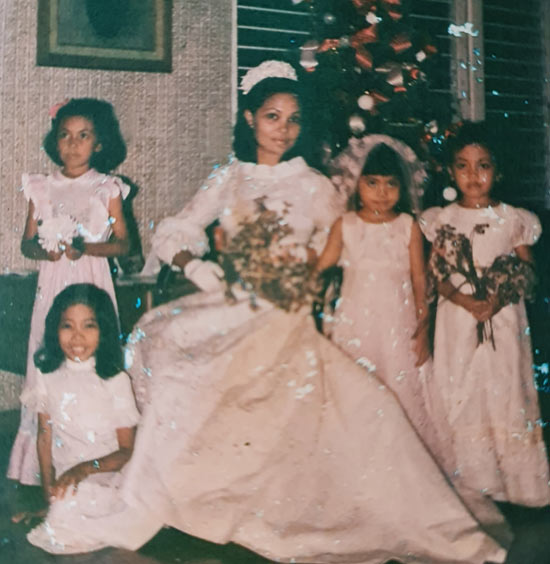
People often joke with me about sleeping with guns under my bed — it is something I take matter-of-factly. Guns were a visual norm. The sound of gunshots was not that alarming, but New Year’s Eve was especially tricky — we would sometimes find stray bullets in one of the rooms or in the garden. It was a time when Mindanao was seldom thought of by the highly centralized government, which focused more on Luzon and the Visayas.
I had the privilege of meeting and knowing people from all walks of life.
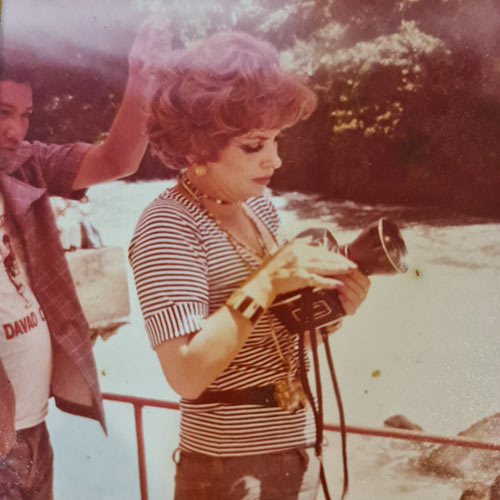
My favorite character in Iligan growing up was Manong Dolphy. I think we ended up calling him that because he was a dead ringer for Dolphy, the comedian. He was very friendly and funny. Schoolchildren flocked to him like bees to honey. He was one of the two most popular personalities in our city — he knew all our names! He sold Magnolia Ice Cream in a cart; I think we bought ice cream mostly because we just wanted to interact with him.
Purong was the other personality famous in Iligan — he was the smalltown sweetheart. He walked around town to sell newspapers and was involved in the town fiesta, playing important roles in the Comedia and the Sinulog alongside my Papa.

Charles Lindbergh visited Iligan with then Secretary Manda Elizalde in connection with the conservation and protection of the monkey-eating eagle, which officially became the Philippine Eagle found in the lush forests of Mindanao.
Our family was fortunate to have Charles Lindbergh visit our home for merienda. My mom took the opportunity to have my brother Manny (being the only boy), have his photo taken with Lindbergh, known as the “Lone Eagle” — the first to make the historic flight across the Atlantic from New York to Paris.
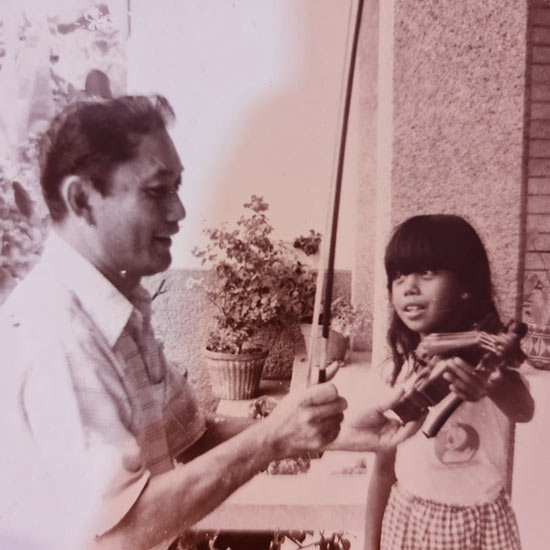
My sister Lizzie and I had our own claim to fame, as we became accidental models for Gina Lollobrigida when she came to Iligan to shoot the Maria Cristina Falls for a coffee-table book about the Philippines.
I got to listen and spend time with all kinds of people. My role in every election was to go to far-flung barrios to attend the “tabo” market day or stay home to talk to visitors. Looking back at those early personal interactions, I find myself thinking of how fascinating it was to meet all these individuals, and later on to realize how these experiences helped shape me in valuing meaning and purpose in my life.
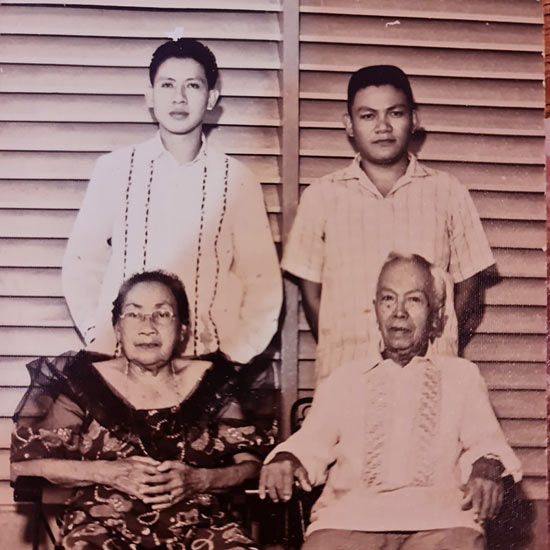
Local + global
Mindanao was the perfect setting for exposure to different indigenous groups: the Maranaos were a visual feast as they visited our home dressed in their finery of sunset yellow woven silk with indigo, fuchsia, red and purple.
My Mama ensured that we were immersed in Philippine culture and taught us songs and dances she learned through her time with the Bayanihan Philippine Dance Company. The visual of my mom for me will always be her wearing the terno with her hair in a neat bun. Whenever there was an opportunity, she would wear the traditional garment: terno, Maria Clara, baro’t saya, Balintawak and the Maranao malong. Our Christmas card more often had us wearing any of these garments.
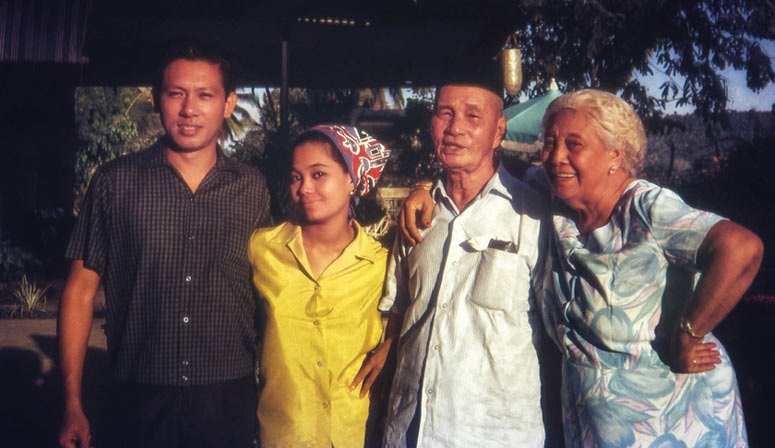
If my Mama’s love for music paved the way for performances by Filipino concert artists Rowena Arrieta, Gilopez Kabayao and Cecile Licad, her love for adventure and the outdoors allowed us to explore Mindanao.
Weekends would be a road trip to Ozamis City to visit Lolo Copio and Lola Milly Cabili Lao, or to Cagayan De Oro to visit the Tamparongs with a side trip to Bukidnon.
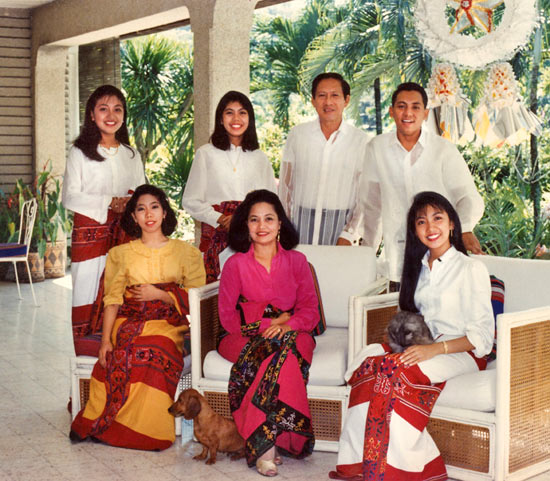
My siblings and I spent our summers in Basilan. I distinctly remember one summer vacation as we were crossing the Basilan Channel to the island of Malamawi — we chanced upon a Samal fluvial wedding ceremony. The image of the vintas adorned with colorful flags carrying the newlyweds and their families is forever etched in my memory.
Iligan is also called The City of Majestic Waterfalls, boasting 23 waterfalls, plus freshwater springs and caves. There were summers spent waterfall-hopping with my Mama leading a pack of neighborhood children, or spur-of-the moment plans to go to a waterfall, or to head to the beach for windsurfing with the family.

The appreciation for Philippine culture was complemented by exposure to other cultures. My Mama found a way to bring to our little town of Iligan the China Central Ballet, Pirin Bulgarian National Folk Ensemble, Hariraya Ballet, Bayanihan National Folk Dance Company, and CCP Dance Company, among others.
With direct access to the mayor, my Mama would request for afternoon classes in the schools to be suspended so we could all watch the performances. Imagine a gymnasium filled with schoolchildren, watching a performance of Swan Lake by the China Central Ballet — it was a sight to behold and the shouts of glee, music to the ears.
My childhood spent in Mindanao helped open up the world to me. The gifts of people and relationships, purpose and meaning, a fierce love for my local culture and a continuing thirst to learn from the world, I owe to my beloved Land of Promise.
It is said that there is a reason why you are born into a certain family. Reminiscing about my childhood makes me remember that a century ago, there was a push for Filipinos from the North to “Go South.” In 1913 my maternal great-grandfather, Juan Alano of Malolos, Bulacan, heeded that call.
On the Rizal Monument plaque at Rizal Park, both my paternal and maternal ancestors are listed among members of the First Congress, representing undivided Lanao (Senator Tomas Cabili) and undivided Zamboanga Peninsula (Congressman Juan Alano), respectively.
My undeniable deep roots in Mindanao helped me remain true to my local heritage. At the same time, the exposure I had to global culture shaped my perspective and spurred on my creativity.
Filip + Inna
Growing up as I did, there was some expectation to continue the family history in public service. The lesson learned is that public service does not have to be just in politics. The opportunity to serve is always at hand for each and every one of us. We just need to look more closely. Purpose and meaning through my work with artisans have provided the opportunity to make a difference, continue the human interactions and nurture them into relationships.
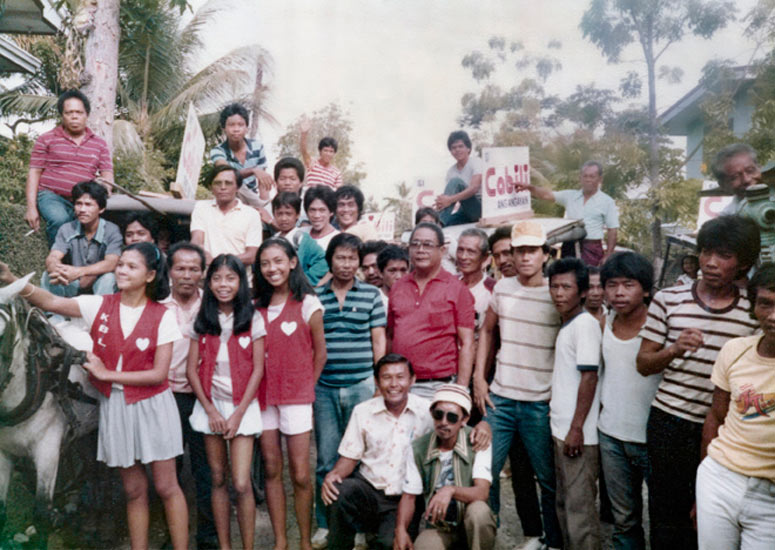
As I am writing this article in my design studio in Mandaluyong, the textiles and crafts that adorn corners of the rooms are evidence of my childhood — appreciation for Philippine culture and the provenance of my inspiration.
My work has given me the opportunity to venture outside the Philippines: a talk at the Textile Museum in Washington, DC, and Philippine Embassy in Berlin, trunk shows in Singapore, Hong Kong, Mexico, London, and around the US, trade shows in New York and Paris.
My childhood spent in Mindanao helped open up the world to me. The gifts of people and relationships, purpose and meaning, a fierce love for my local culture and a continuing thirst to learn from the world, I owe to my beloved Land of Promise.
Banner photo: Family photo wearing the terno



